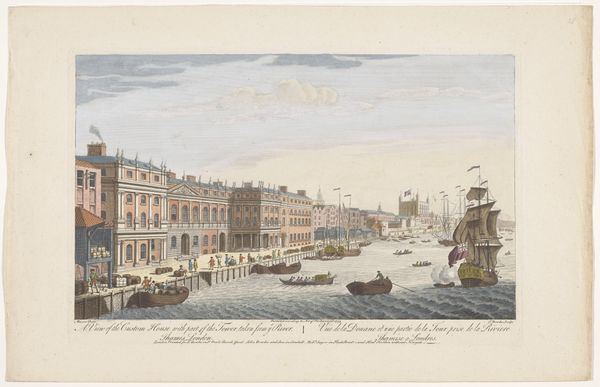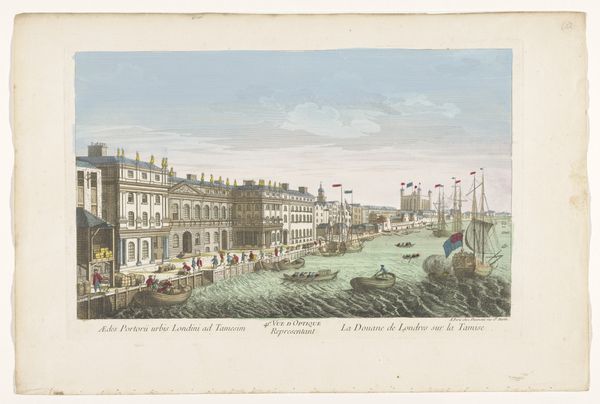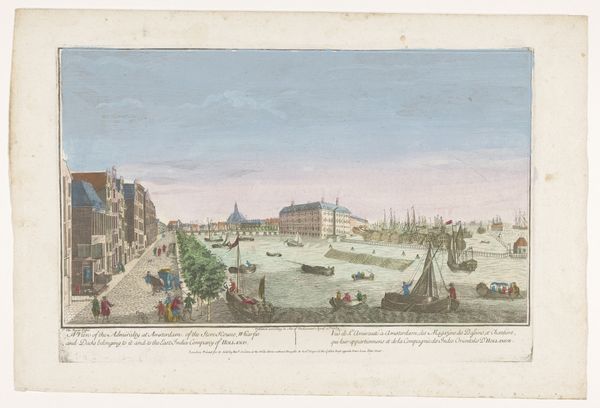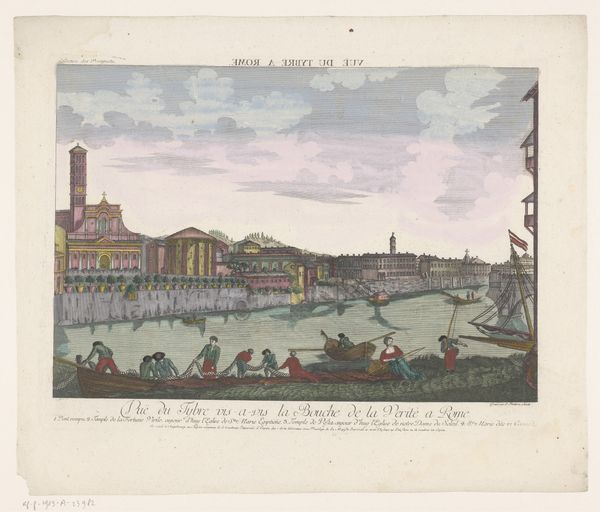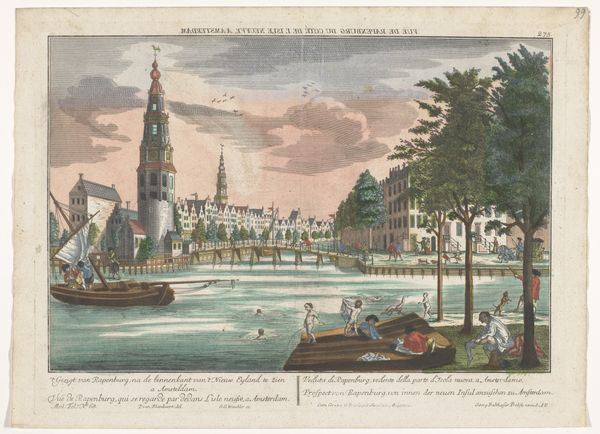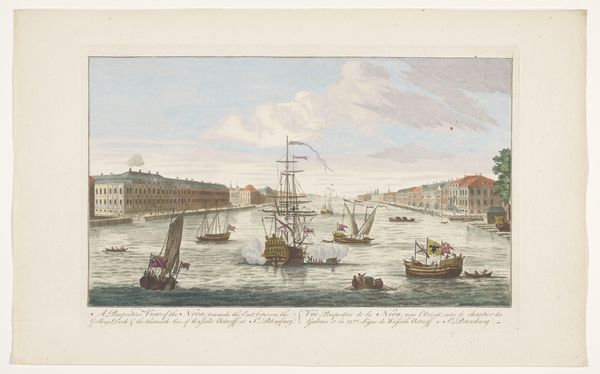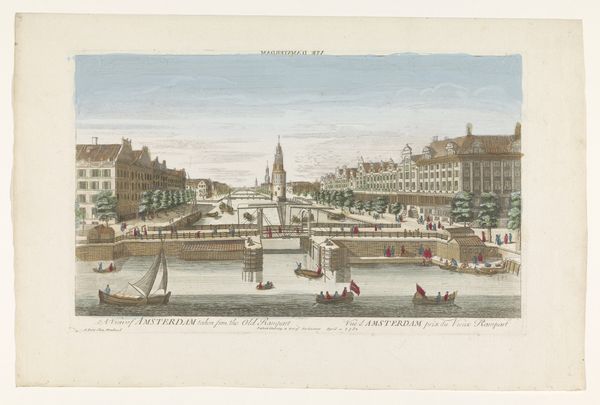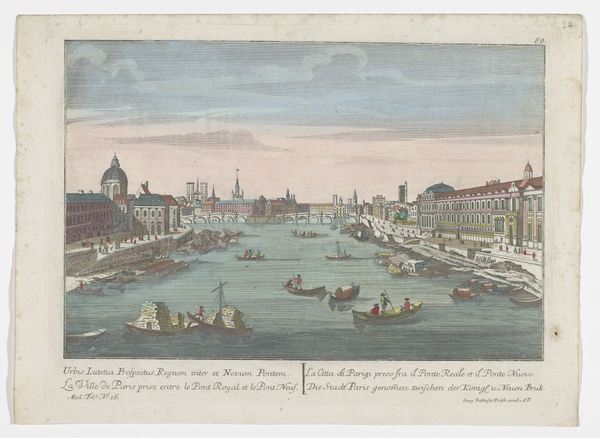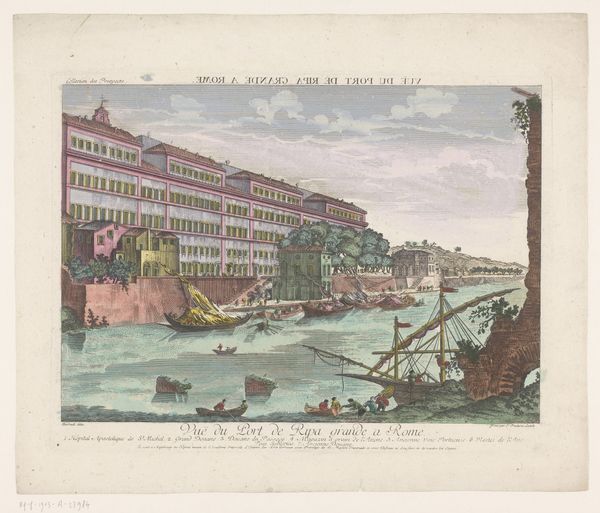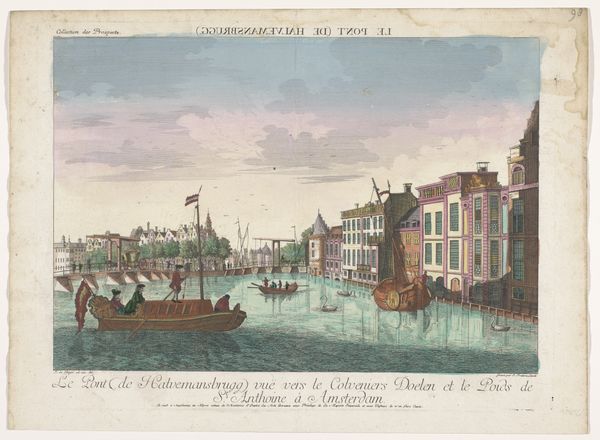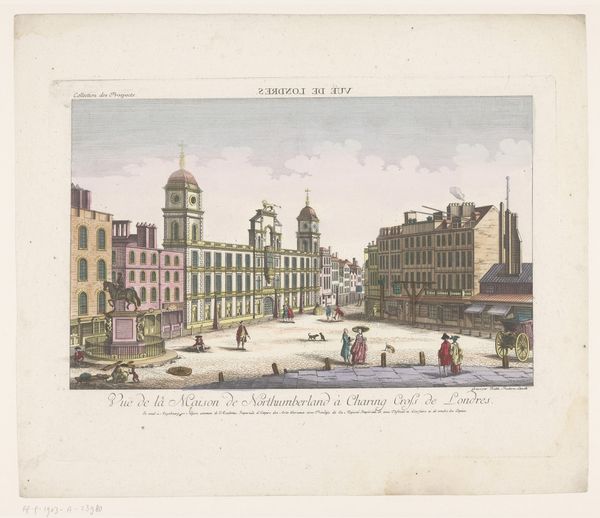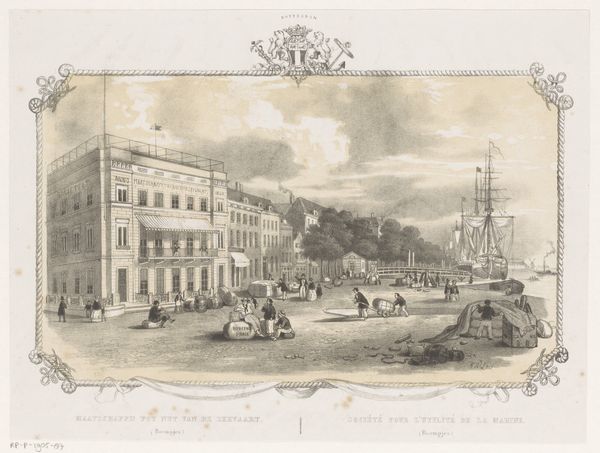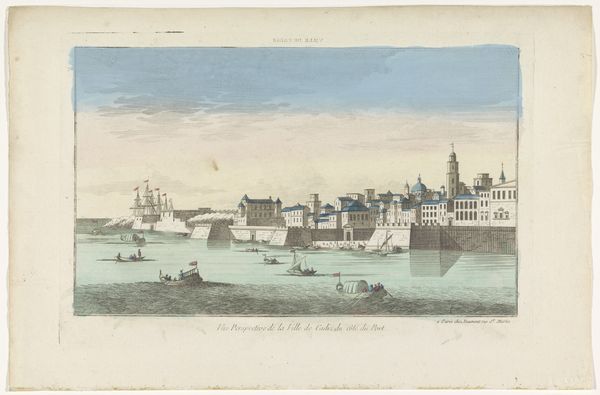
painting, print, etching
#
baroque
#
painting
# print
#
etching
#
cityscape
#
watercolour illustration
Dimensions: height 245 mm, width 392 mm
Copyright: Rijks Museum: Open Domain
Editor: This is "View of the Custom House on the River Thames, London," created around 1753. It’s an etching, a print, and a painting held at the Rijksmuseum. The detailed architecture contrasted with the activity on the river gives me a real sense of bustling 18th-century London. What does this piece tell you? Curator: This piece reveals the crucial role of the Custom House in London's socio-economic landscape. It wasn't just a building; it was the literal point of contact for global trade flowing into Britain. This image promotes the idea of a thriving British empire, grounded in commerce and naval power. Notice how the orderly architecture of the Custom House is juxtaposed with the lively disorder of the river, packed with ships, boats, and people loading and unloading goods. Who was benefiting most from all this activity? Editor: That’s fascinating! So it’s not just a pretty picture of London, it’s a statement about British power. You’re making me wonder about the people we don’t see here…the producers of all those goods? Curator: Exactly. Think about the origins of the goods filling those ships – tea, spices, sugar. What were the human costs of that prosperity? Images like these, while celebrating British industry, often elide the exploitation and colonial dynamics that underpinned it. By understanding that, we view it with a far more critical, and complete, perspective. Editor: I never thought about it that way. Seeing the artwork as a historical record really highlights the complex story it's telling, and all the details it leaves out. Curator: Indeed, images participate in a visual culture. Ask yourself, how might similar views have shaped the perceptions of those living at the time and those who came after?
Comments
No comments
Be the first to comment and join the conversation on the ultimate creative platform.
